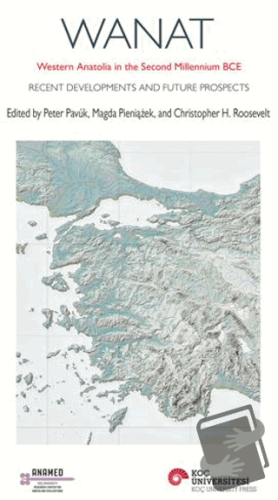Wanat Western Anatolia In The Second Millennium Bce Recent Developments And Future Prospects

This peer-reviewed edited volume brings together the results of a diverse group of international researchers conducting new fieldwork, applying new approaches, and making new interpretations about the archaeology of Middle and Late Bronze Age western Anatolia. The territory is huge, and it shows considerable regional diversity. What makes western Anatolian cultures different from their neighbors? Is it possible to identify discrete subregions clearly? And what trajectories of local cultural change and regional interaction did they follow? In addressing these and many other questions, the contributors to this volume provide fresh overviews of current states of research, demonstrating material and chronological synchronicities and/or gaps in knowledge that stretch across the broad territory of western Anatolia, just as they encourage further research into defining regional and sub-regional specificities. Such specificities suggest that the area should not be thought of as one monolithic cultural whole. Rather, they allude to a collection of related yet discrete units, whose shared commonalities stem from participation in overlapping spheres of communication, exchange, and political interaction, justifying their consideration together in a volume like this one.
| Taksit Sayısı | Taksit tutarı | Genel Toplam |
|---|---|---|
| Tek Çekim | 720,00 | 720,00 |
| 3 | 262,27 | 786,82 |
| 6 | 138,47 | 830,81 |
| 9 | 97,21 | 874,87 |
| 12 | 76,57 | 918,79 |
| Taksit Sayısı | Taksit tutarı | Genel Toplam |
|---|---|---|
| Tek Çekim | 720,00 | 720,00 |
| 3 | 262,27 | 786,82 |
| 6 | 138,47 | 830,81 |
| 9 | 97,21 | 874,87 |
| 12 | 76,57 | 918,79 |
| Taksit Sayısı | Taksit tutarı | Genel Toplam |
|---|---|---|
| Tek Çekim | 720,00 | 720,00 |
| 3 | 262,27 | 786,82 |
| 6 | 138,47 | 830,81 |
| 9 | 97,21 | 874,87 |
| 12 | 76,57 | 918,79 |
| Taksit Sayısı | Taksit tutarı | Genel Toplam |
|---|---|---|
| Tek Çekim | 720,00 | 720,00 |
| 3 | 262,27 | 786,82 |
| 6 | 138,47 | 830,81 |
| 9 | 97,21 | 874,87 |
| 12 | 76,57 | 918,79 |
| Taksit Sayısı | Taksit tutarı | Genel Toplam |
|---|---|---|
| Tek Çekim | 720,00 | 720,00 |
| 3 | 262,27 | 786,82 |
| 6 | 138,47 | 830,81 |
| 9 | 97,21 | 874,87 |
| 12 | 76,57 | 918,79 |
| Taksit Sayısı | Taksit tutarı | Genel Toplam |
|---|---|---|
| Tek Çekim | 720,00 | 720,00 |
| 3 | 262,27 | 786,82 |
| 6 | 138,47 | 830,81 |
| 9 | 97,21 | 874,87 |
| 12 | 76,57 | 918,79 |
| Taksit Sayısı | Taksit tutarı | Genel Toplam |
|---|---|---|
| Tek Çekim | 720,00 | 720,00 |
| 3 | - | - |
| 6 | - | - |
| 9 | - | - |
| 12 | - | - |
This peer-reviewed edited volume brings together the results of a diverse group of international researchers conducting new fieldwork, applying new approaches, and making new interpretations about the archaeology of Middle and Late Bronze Age western Anatolia. The territory is huge, and it shows considerable regional diversity. What makes western Anatolian cultures different from their neighbors? Is it possible to identify discrete subregions clearly? And what trajectories of local cultural change and regional interaction did they follow? In addressing these and many other questions, the contributors to this volume provide fresh overviews of current states of research, demonstrating material and chronological synchronicities and/or gaps in knowledge that stretch across the broad territory of western Anatolia, just as they encourage further research into defining regional and sub-regional specificities. Such specificities suggest that the area should not be thought of as one monolithic cultural whole. Rather, they allude to a collection of related yet discrete units, whose shared commonalities stem from participation in overlapping spheres of communication, exchange, and political interaction, justifying their consideration together in a volume like this one.










